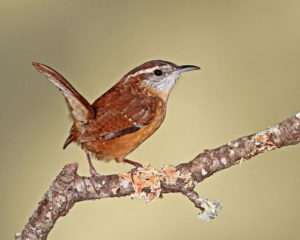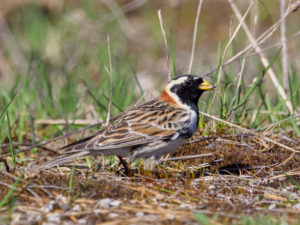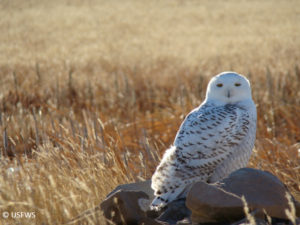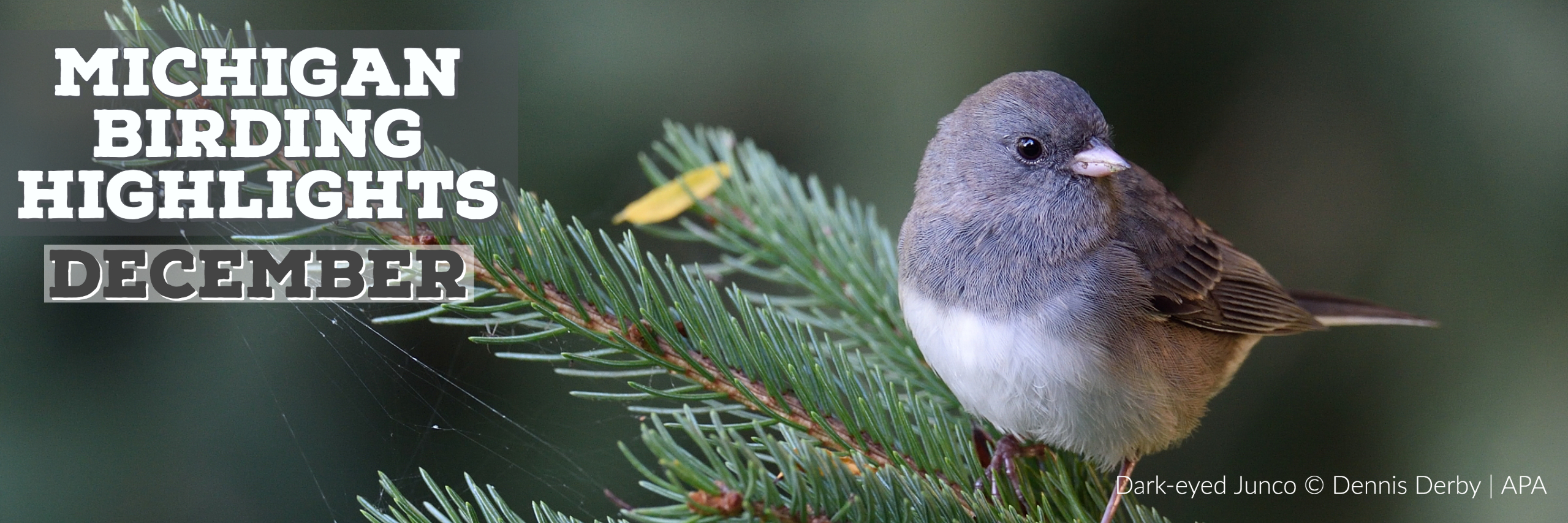
Carolina Wren © Clyde Dexter | APA
Time to get outdoors (again)! Though we’ve finally been hitting some lower temperatures, wind chills, and snow throughout the state, this is no time to sit on your couch and let those birds pass you by! That said, you can have excellent feeder bird viewing, and there’s nothing wrong with that. I have been enjoying numerous Dark-eyed Juncos, a resident pair of Carolina Wrens (whose range extends into southern Michigan), Red-bellied Woodpeckers, plenty of Black-capped Chickadees at my feeder, and occasionally have a Cooper’s Hawk stop by to assess its chances of a meal.
Birding can be really fun and exciting in December, in Michigan! Late migrating birds are still trickling through from north to south, and rarities continue to pop up here and there. If you’re on a birding listserv or social media group, you may have heard about the recent Cassin’s Finch in the western Upper Peninsula last week or about a Purple Sandpiper that’s been hanging out on the Lake Michigan shoreline near Grand Rapids.

Lapland Longspur © Darrell Lawson
Open fields and roadsides can be great places to spot exciting birds such as Lapland Longspur, Snow Bunting, Snowy Owl, or Rough-legged Hawk.
It is very important to note that Snowy Owls may be exhausted and very sensitive to disruption by birders and photographers. Read more about how to ethically view Snowy Owls here. Most importantly, do not approach a Snowy Owl closely enough to make them fly; these owls are resting during the day and reserving critical energy. Snowy Owls are irregular visitors from the Arctic and are often hungry with low energy (fat) reserves. Extra energy spent by a Snowy Owl flying away from a person approaching too closely may be the tipping point between survival or death.

Snowy Owl. Photo courtesy of US Fish and Wildlife Service
Of course, there are still the numerous winter finches mentioned in our November blog post, with this winter being a big irruption year. Common Redpolls are being seen in big flocks, Evening Grosbeaks are still a wonder and a beautiful sight to see. Watch your feeders for Purple Finches, Red-breasted Nuthatch, and more!
One final note, as we round out this year — I recently came across a challenge for 2021: to spend 1,000 hours outdoors this coming year. This is a big goal (think three hours per day, on average), but the benefits of being outdoors, especially for children, are enormous. Why not consider combining this goal with birding? Make a plan to get out during this last month of 2020, and ramp up to more time observing birds throughout 2021, and make it an activity to share with your children or grandchildren!
~ by Linnea Rowse, Michigan Audubon conservation program coordinator

